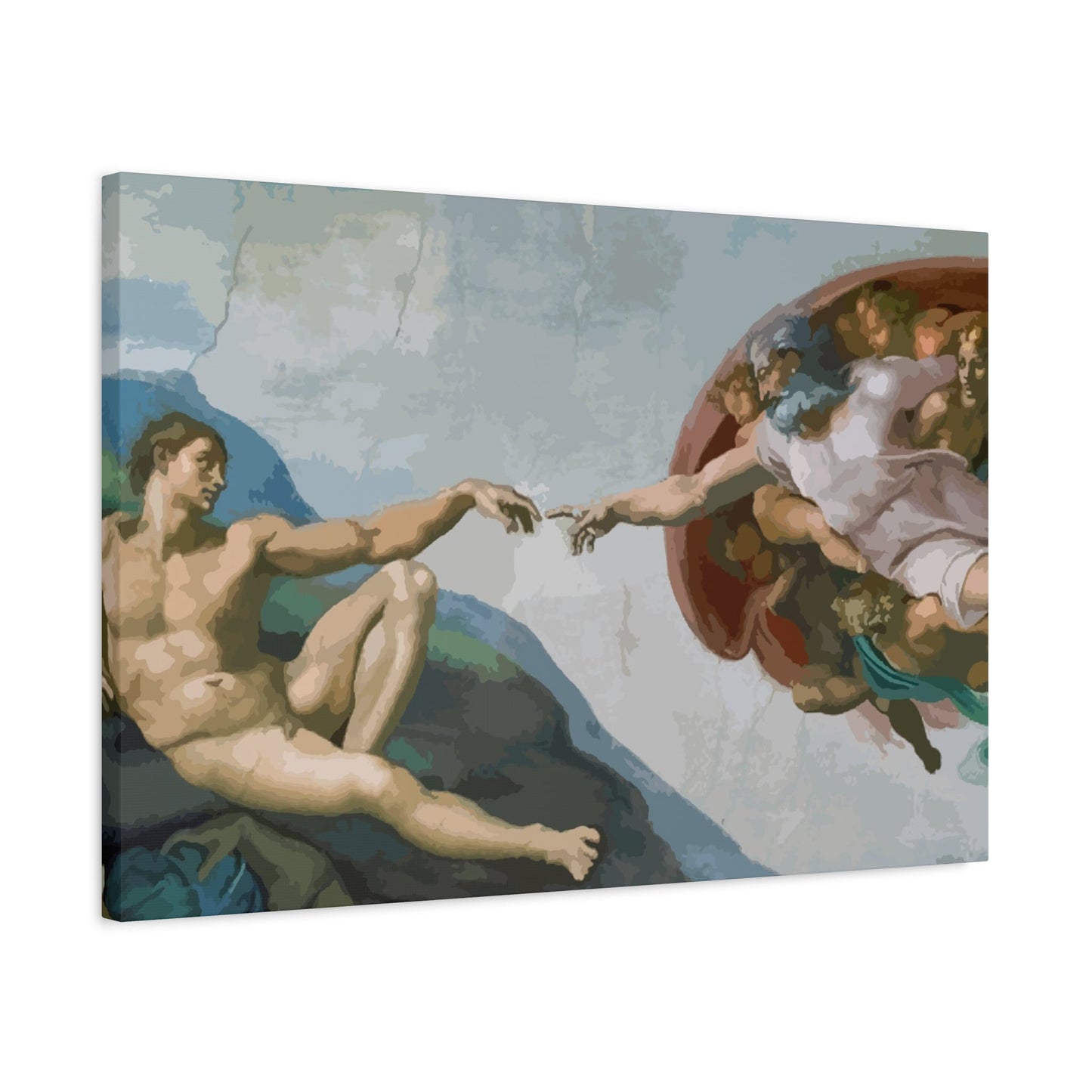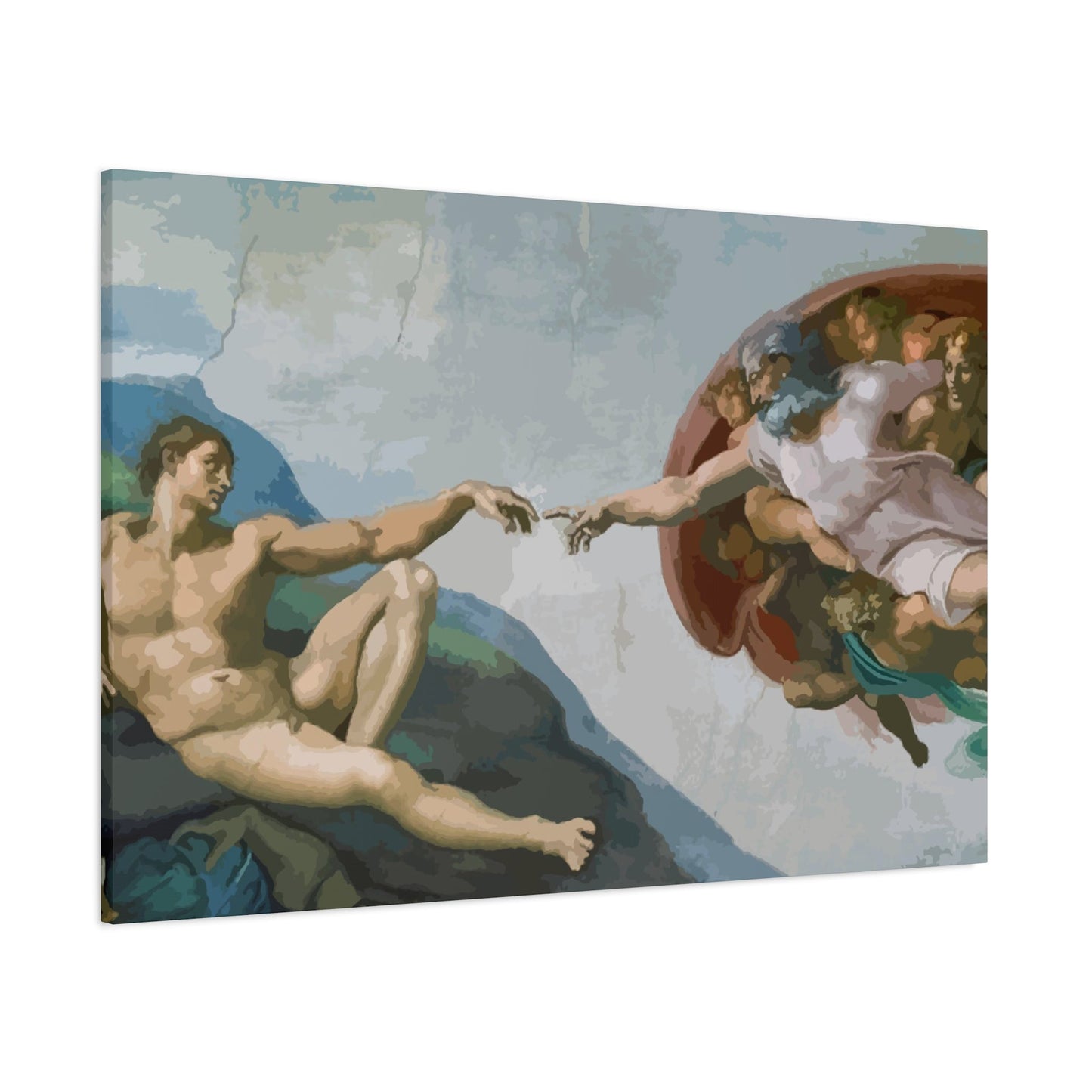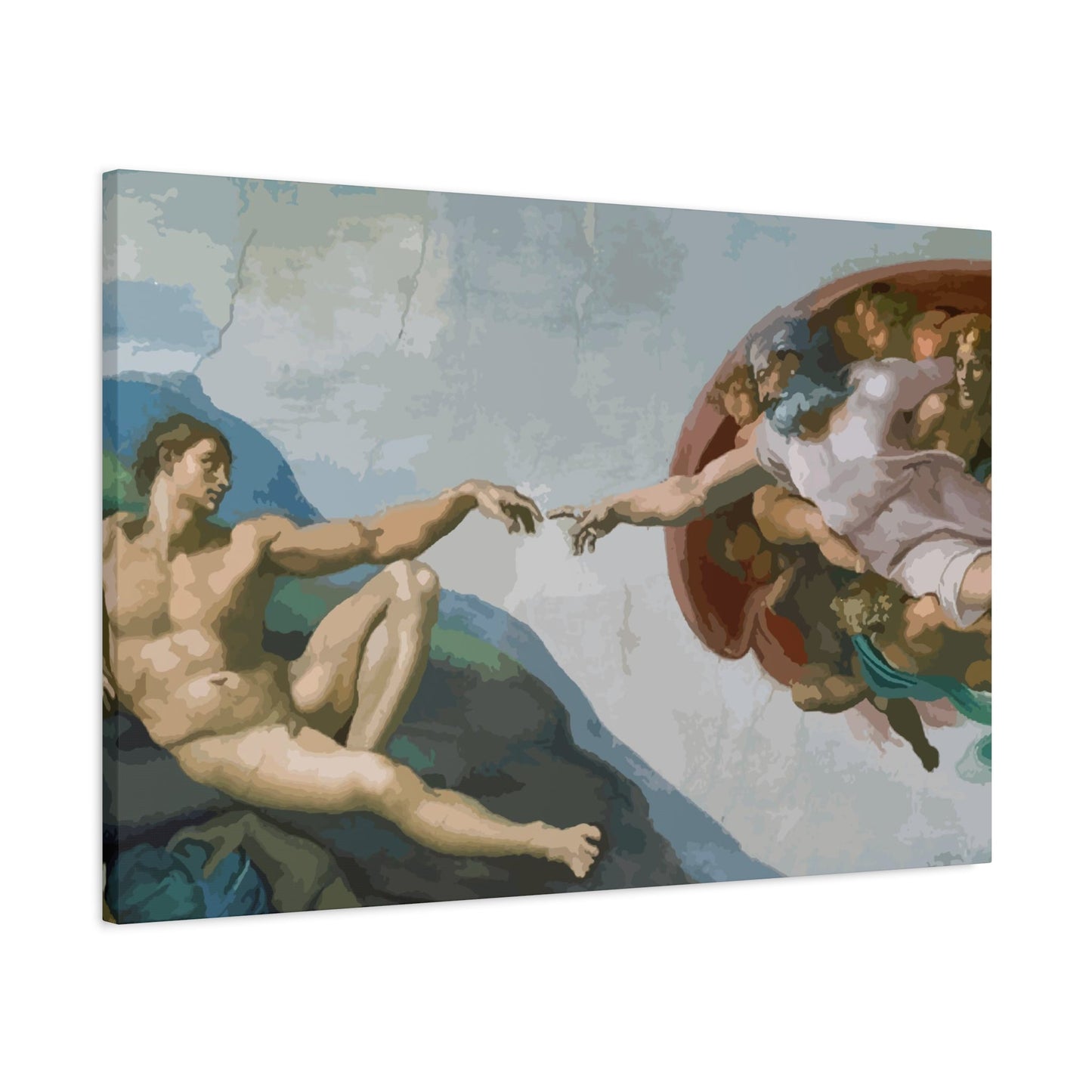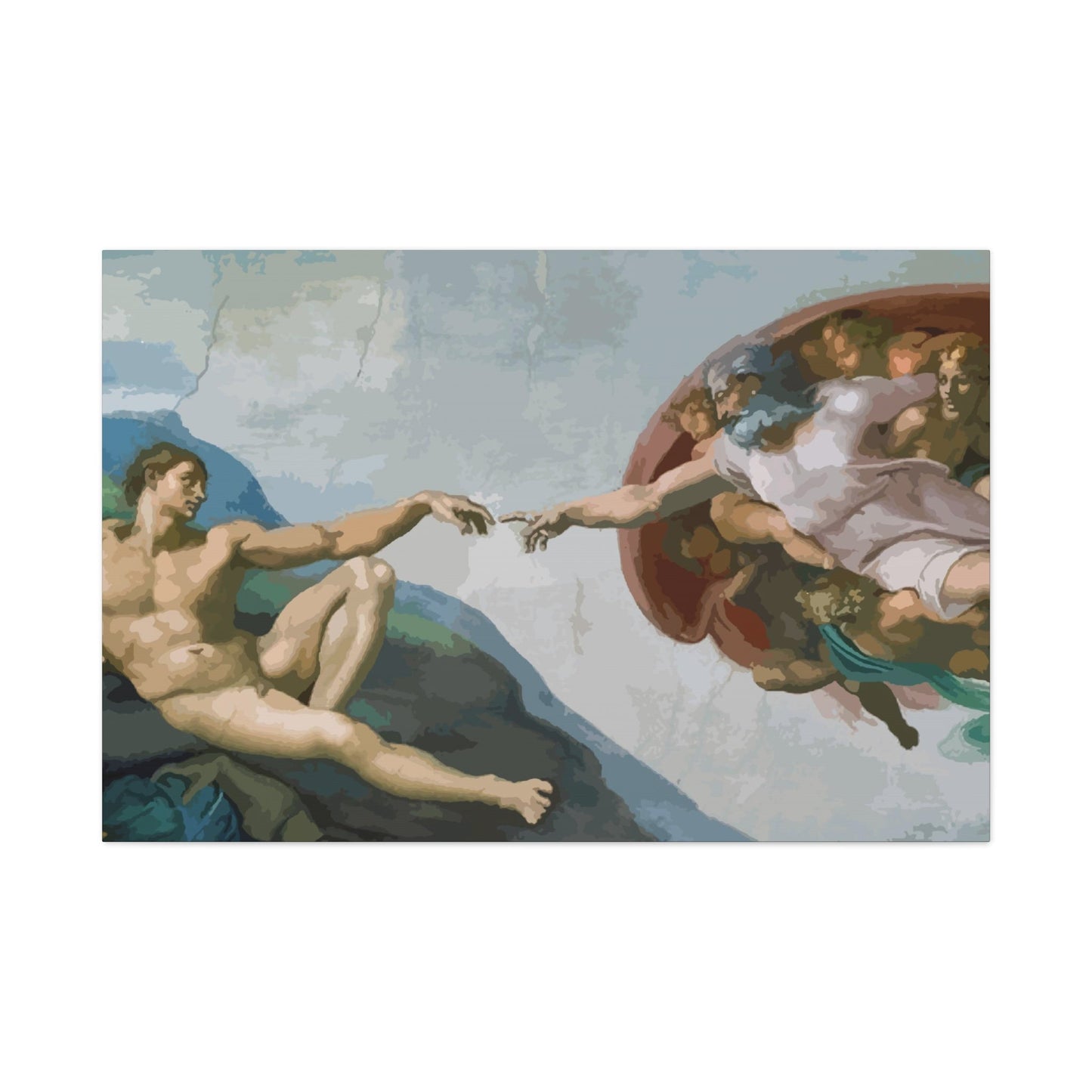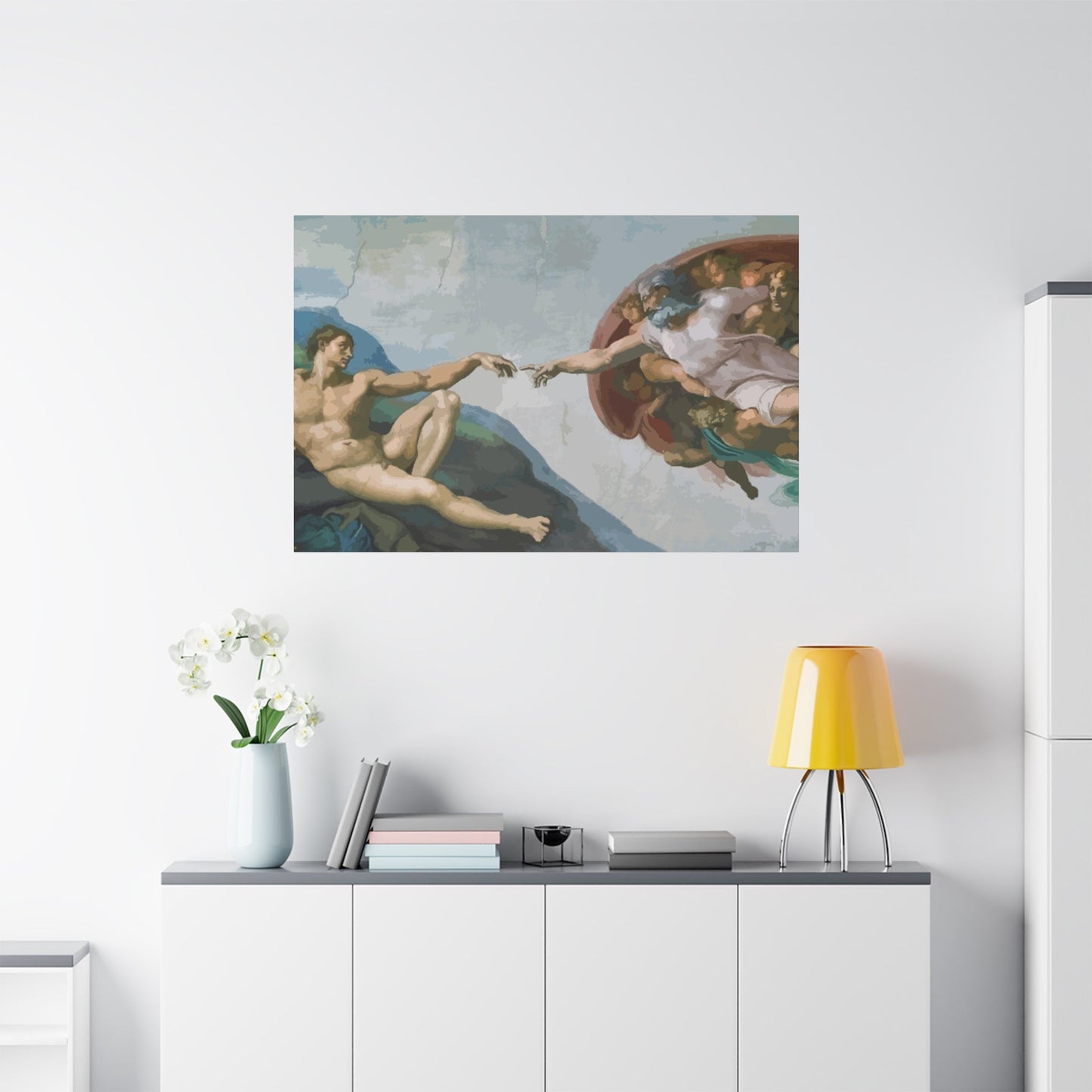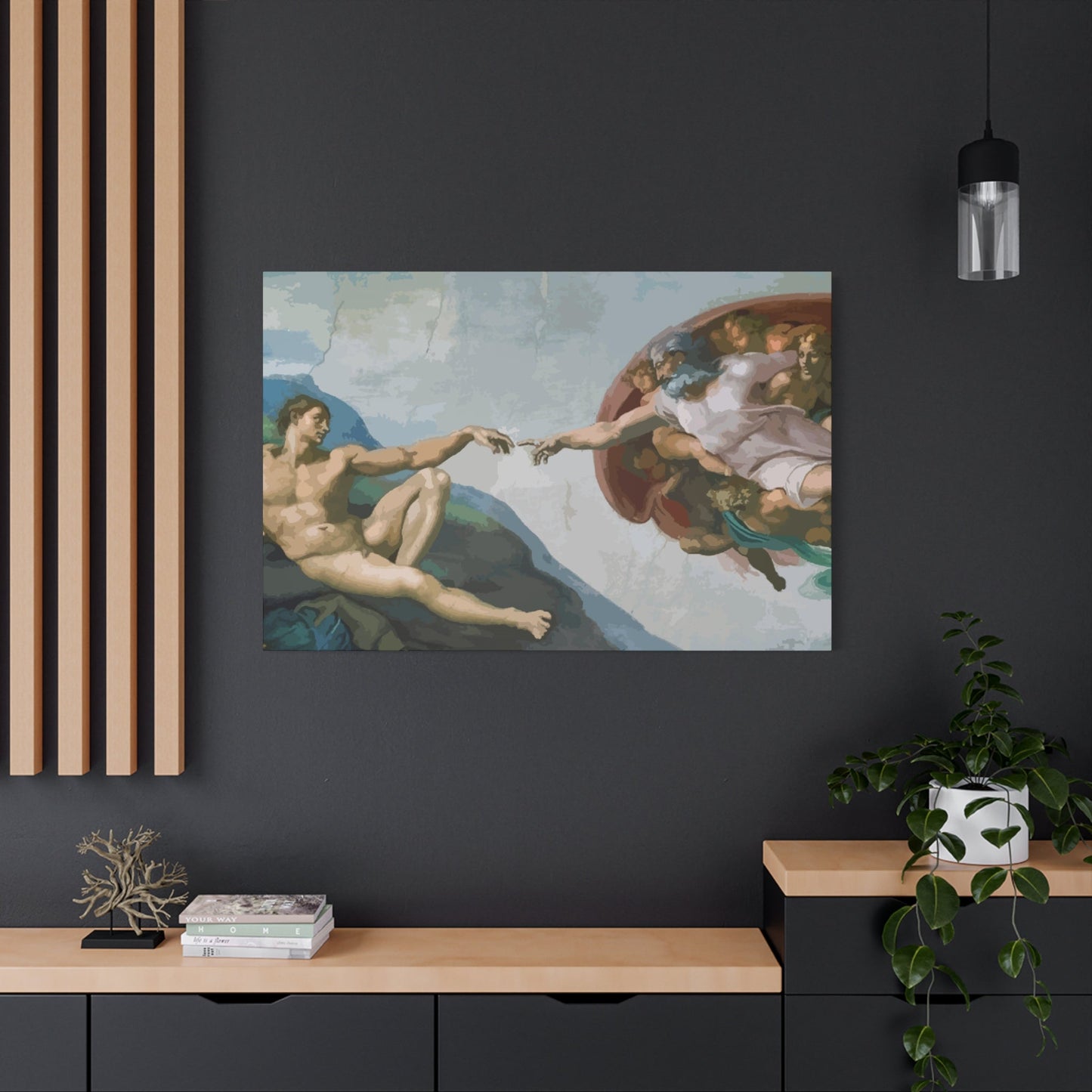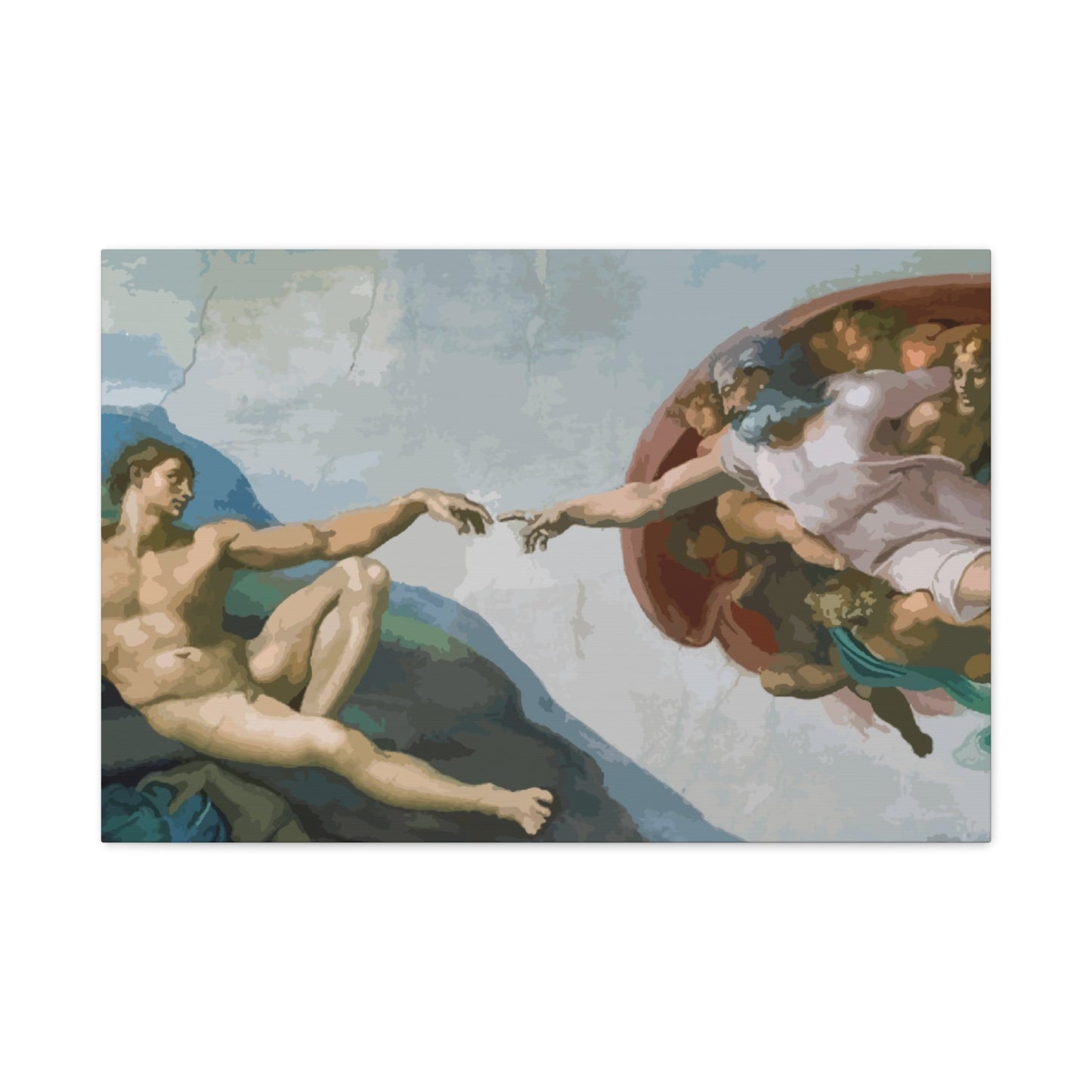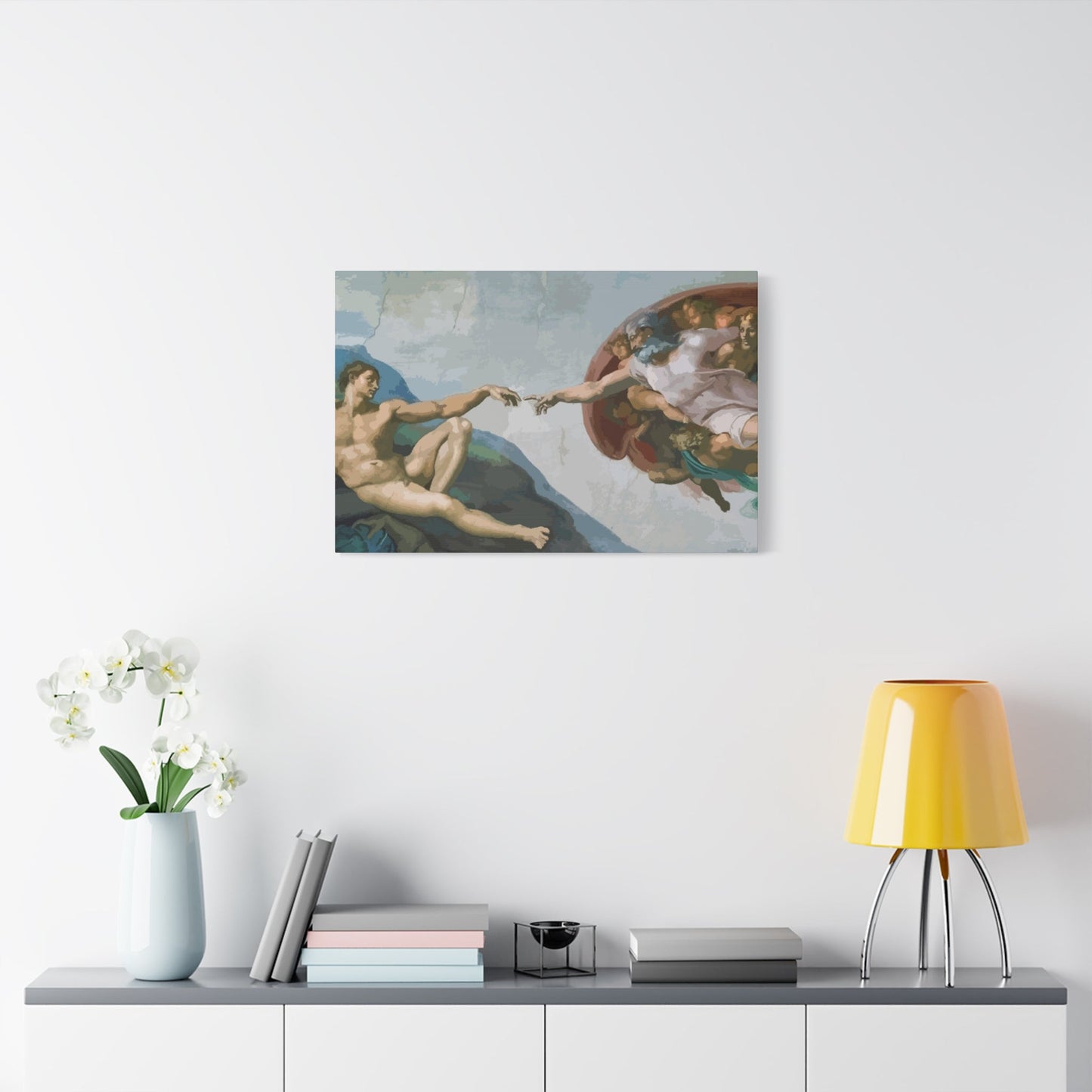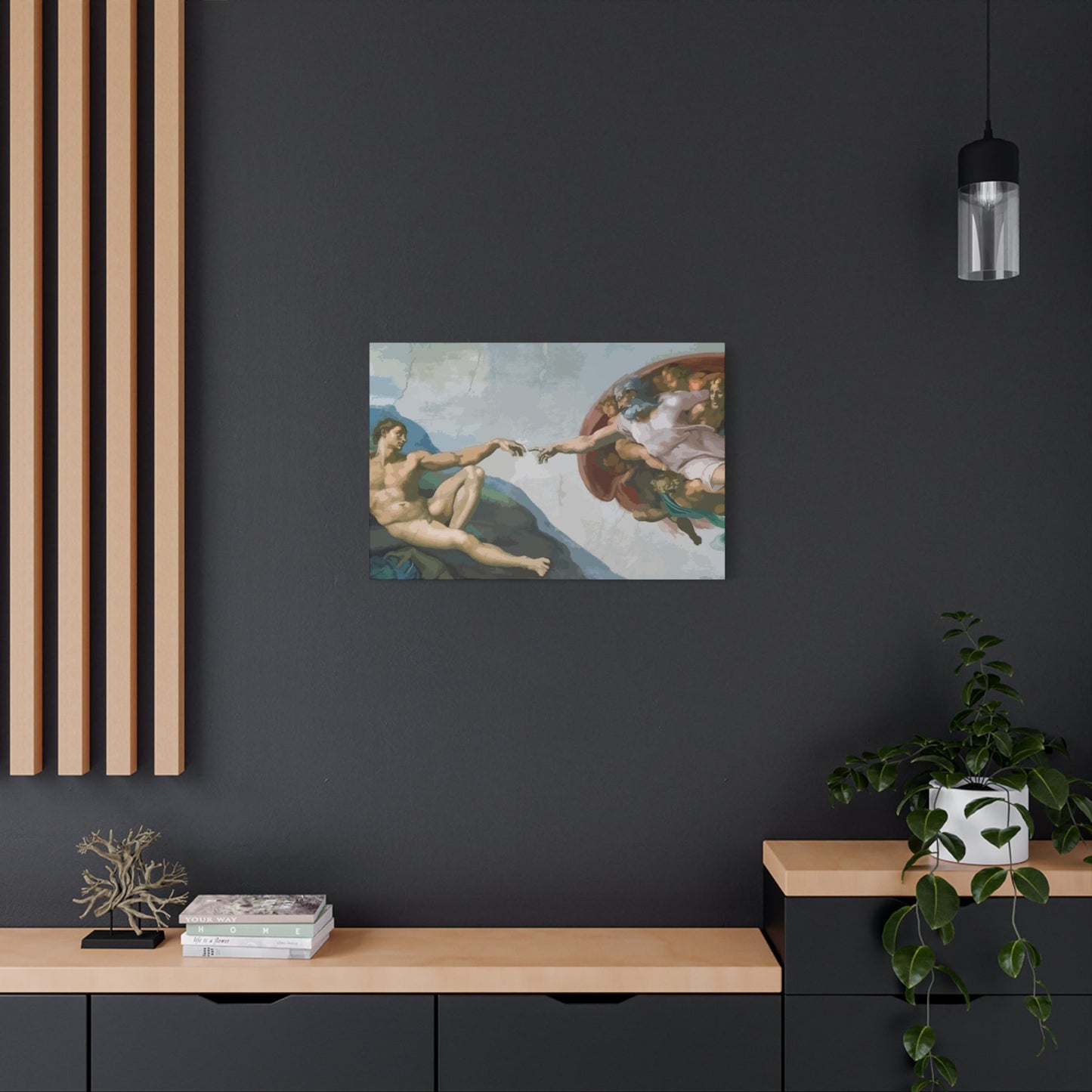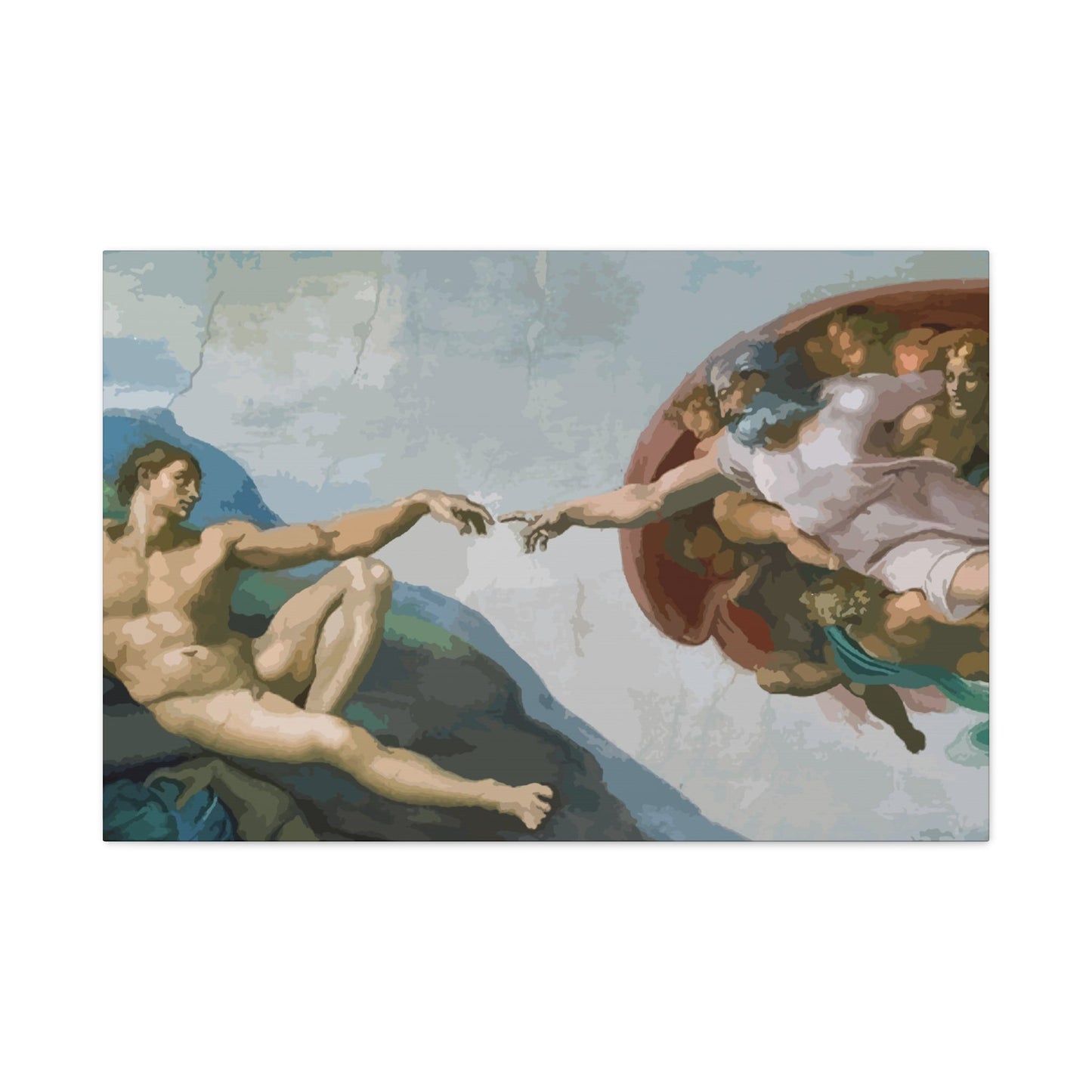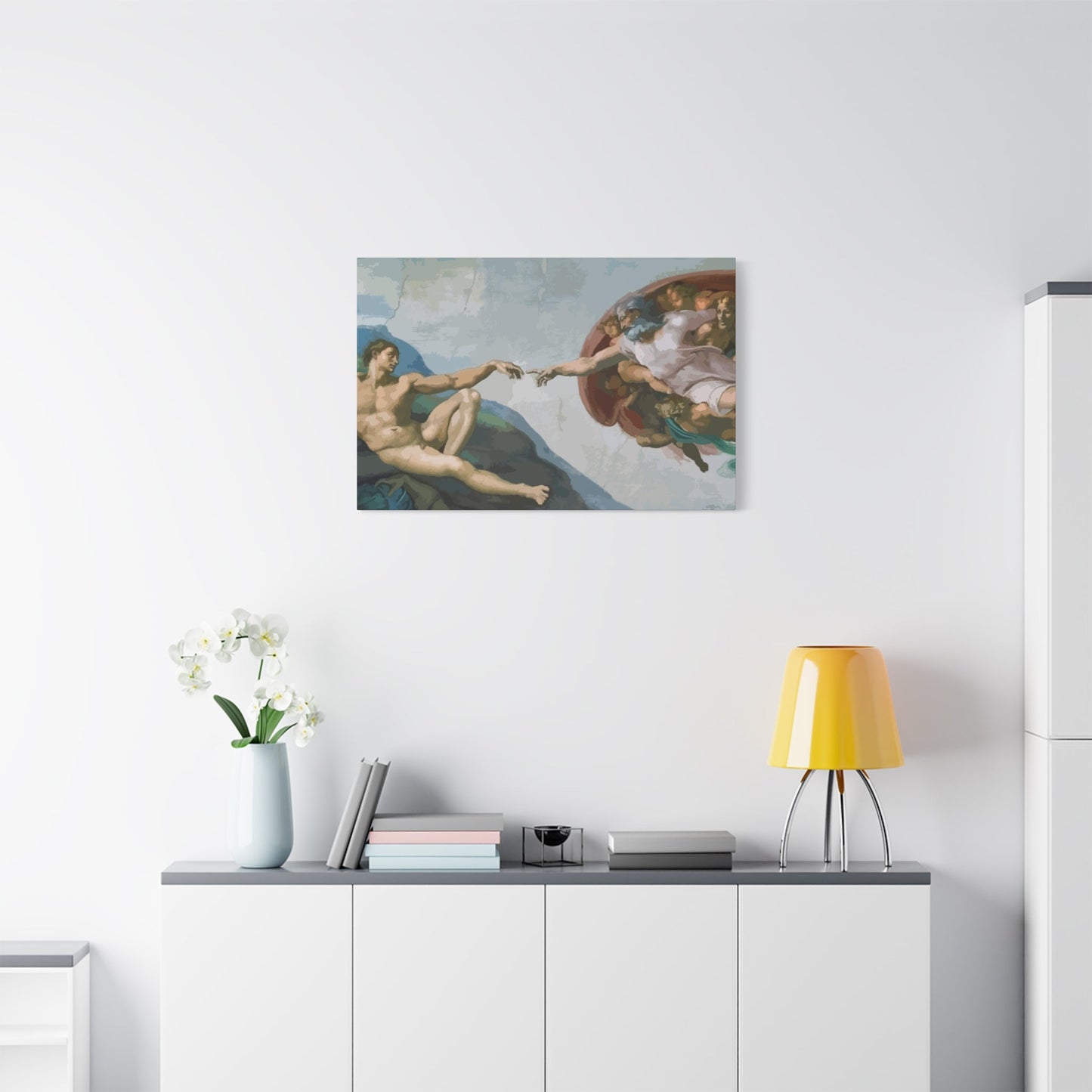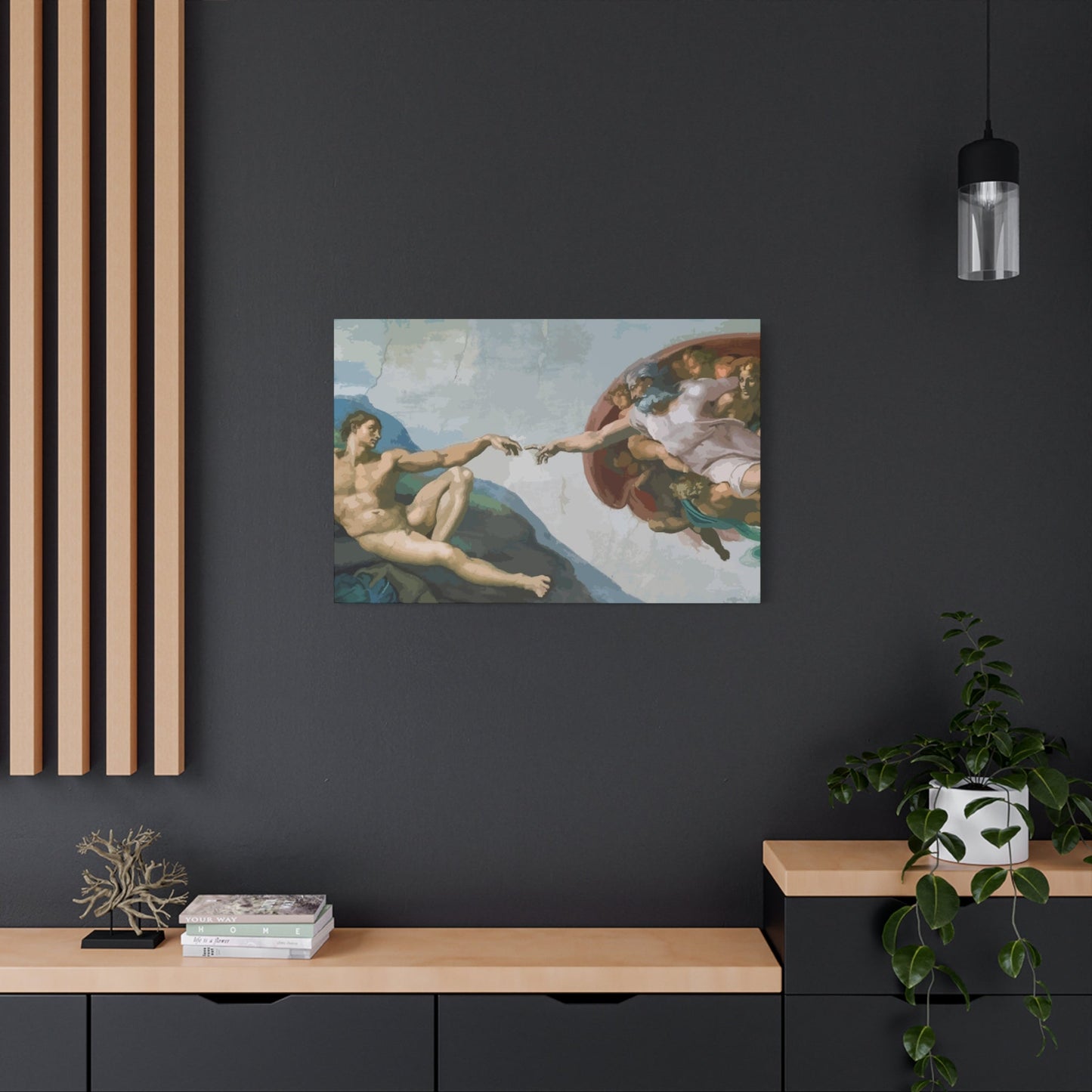Renaissance Wall Art: Timeless Elegance for Contemporary Living
The magnificent artistic legacy of the Renaissance period continues to captivate homeowners and decorators seeking to infuse their living environments with sophistication and cultural depth. This extraordinary movement, which flourished between the 14th and 17th centuries, represents one of humanity's most remarkable periods of artistic achievement. When incorporated into modern homes, Renaissance-inspired wall art creates an atmosphere of refined elegance that transcends temporal boundaries.
The enduring popularity of Renaissance aesthetics in contemporary decorating stems from the movement's emphasis on harmony, proportion, and human dignity. These foundational principles remain as relevant today as they were centuries ago, making Renaissance wall art an excellent choice for those seeking to create environments that feel both sophisticated and welcoming. The rich color palettes, intricate compositions, and masterful techniques characteristic of this period offer homeowners countless opportunities to enhance their living environments with pieces that speak to both intellectual and emotional sensibilities.
Modern interpretations of Renaissance themes allow contemporary homeowners to enjoy the beauty of this artistic tradition without the constraints of historical accuracy. Artists today draw inspiration from Renaissance masters while incorporating contemporary materials, techniques, and sensibilities to create works that feel both familiar and fresh. This approach makes Renaissance wall art accessible to a broader audience while maintaining the essential characteristics that make this artistic tradition so compelling.
The psychological impact of Renaissance wall art in contemporary homes cannot be overstated. These works often feature themes of beauty, wisdom, and human achievement that inspire and uplift viewers. The presence of such art in living environments creates a sense of connection to broader cultural traditions and artistic excellence that enriches daily life. Whether displayed in formal dining rooms, private studies, or casual living areas, Renaissance-inspired pieces contribute to an atmosphere of refinement and thoughtful curation.
Furthermore, the versatility of Renaissance themes allows for creative interpretation across various contemporary design styles. From minimalist modern homes that benefit from the dramatic contrast of ornate Renaissance pieces to traditionally decorated residences that embrace the historical continuity, these artworks adapt remarkably well to different aesthetic contexts. This adaptability ensures that Renaissance wall art remains a viable and attractive option for homeowners with diverse design preferences and living situations.
Masterpiece Recreations: Bringing Iconic Renaissance Paintings to Canvas
The recreation of famous Renaissance paintings on canvas has emerged as one of the most popular ways to incorporate this artistic tradition into contemporary homes. Master artists of the Renaissance created works of such enduring beauty and significance that they continue to inspire and move viewers centuries after their creation. Through high-quality reproductions and artistic interpretations, homeowners can now enjoy versions of these masterpieces in their own living environments.
Leonardo da Vinci's contributions to Renaissance art provide numerous options for wall art enthusiasts. Beyond the universally recognized works, his studies of human anatomy, botanical illustrations, and architectural sketches offer sophisticated alternatives for those seeking something distinctive yet historically grounded. These works demonstrate da Vinci's incredible range and intellectual curiosity, making them perfect conversation pieces for studies, libraries, or any room where contemplation and learning are valued.
Michelangelo's powerful artistic vision translates beautifully to contemporary wall art applications. His mastery of human form and dramatic composition creates pieces that command attention while inspiring awe. Reproductions of his ceiling paintings, sculptural studies, and architectural drawings bring the grandeur of Renaissance achievement into personal living environments. The emotional intensity and technical excellence of Michelangelo's work make these reproductions particularly effective in formal settings where their impact can be fully appreciated.
Raphael's harmonious compositions and graceful figures offer a more serene approach to Renaissance wall art. His ability to combine technical excellence with emotional warmth creates pieces that feel both impressive and approachable. Reproductions of his portraits, religious scenes, and mythological subjects work particularly well in residential settings where beauty and tranquility are desired. The balanced compositions and pleasing color harmonies characteristic of Raphael's work make these pieces versatile additions to various room types and decorating styles.
Botticelli's distinctive style brings a unique dimension to Renaissance wall art collections. His flowing lines, ethereal figures, and symbolic richness create pieces that feel both historically grounded and timelessly beautiful. The dreamlike quality of many Botticelli works makes them particularly suitable for bedrooms, meditation areas, or any environment where a sense of serenity and beauty is desired. His mythological subjects and allegorical compositions also provide excellent opportunities for meaningful artistic statements in contemporary homes.
The process of creating high-quality reproductions has evolved significantly with advances in printing technology and artistic techniques. Modern reproduction methods can capture the subtle color variations, textural details, and overall impact of original works with remarkable fidelity. This technological advancement makes it possible for homeowners to enjoy museum-quality reproductions at accessible price points, democratizing access to these artistic treasures.
Elevating Home Environments: How Renaissance Wall Art Enhances Elegance
The incorporation of Renaissance wall art into contemporary homes represents one of the most effective ways to instantly elevate the sophistication and cultural depth of any living environment. These artistic pieces serve as more than mere decoration; they function as windows into a world of unparalleled artistic achievement and cultural refinement. The presence of Renaissance-inspired art immediately signals to visitors and residents alike that this is a home where beauty, culture, and intellectual pursuits are valued and celebrated.
The transformative power of Renaissance wall art lies in its ability to create focal points that draw the eye and anchor entire room designs. A well-chosen Renaissance piece can serve as the centerpiece around which other decorative elements are arranged, creating cohesive and visually compelling arrangements. The rich colors, complex compositions, and masterful techniques characteristic of Renaissance art provide endless opportunities for creating dramatic visual impact while maintaining an atmosphere of refined elegance.
Color harmony plays a crucial role in how Renaissance wall art enhances contemporary living environments. The sophisticated color palettes developed by Renaissance masters continue to influence contemporary design trends, offering homeowners proven combinations that create both visual interest and aesthetic cohesion. The deep blues, rich reds, warm golds, and earthy browns frequently found in Renaissance works provide excellent starting points for entire room color schemes, ensuring that the artwork integrates seamlessly with other decorative elements.
The scale and proportion principles that guided Renaissance artists translate directly to contemporary decorating challenges. These historical works demonstrate masterful understanding of how visual elements work together to create balanced, harmonious compositions. When selected and displayed thoughtfully, Renaissance wall art helps establish proper scale relationships within rooms, making environments feel more proportionate and visually satisfying. This principle applies whether working with large statement pieces or collections of smaller works arranged in thoughtful groupings.
Lighting considerations become particularly important when displaying Renaissance wall art, as these works were originally created to be viewed under specific lighting conditions. Proper illumination not only protects the artwork but also ensures that viewers can fully appreciate the subtle details and color relationships that make these pieces so compelling. The interplay between light and shadow, so masterfully employed by Renaissance artists, can be enhanced through careful lighting design that brings out the dimensional qualities and emotional impact of the works.
The psychological benefits of living with Renaissance wall art extend far beyond mere aesthetic pleasure. These works often incorporate themes of human achievement, natural beauty, and spiritual transcendence that can inspire and uplift daily life. The presence of such culturally significant art in personal living environments creates connections to broader human experiences and artistic traditions, enriching the emotional and intellectual atmosphere of the home.
Fundamental Themes and Motifs in Renaissance Wall Decoration
Understanding the key themes and motifs of Renaissance art enables homeowners to make informed choices when selecting pieces for their wall decoration projects. The Renaissance period was characterized by specific intellectual and artistic preoccupations that shaped the content and style of artworks from this era. These themes continue to resonate with contemporary audiences, making Renaissance wall art both historically significant and emotionally relevant for modern homes.
Humanism emerged as one of the central philosophical movements of the Renaissance, emphasizing human dignity, individual achievement, and the potential for personal growth and accomplishment. This humanistic perspective is reflected in countless Renaissance artworks that celebrate human beauty, intelligence, and creativity. Wall art incorporating humanistic themes creates environments that feel optimistic and inspiring, reminding viewers of human potential and achievement. These themes work particularly well in studies, libraries, and other areas dedicated to learning and personal development.
Religious and mythological subjects provided Renaissance artists with rich source material for exploring complex themes while creating visually stunning compositions. These subjects offered opportunities to address universal human experiences such as love, loss, redemption, and transcendence through symbolic and allegorical means. Contemporary homeowners can appreciate these works on multiple levels, enjoying both their aesthetic beauty and their deeper symbolic meanings. Religious themes often work well in formal dining rooms or quiet contemplation areas, while mythological subjects can add drama and sophistication to living rooms and entertainment areas.
The natural world held particular fascination for Renaissance artists, who sought to understand and represent the complexity and beauty of nature through careful observation and artistic interpretation. Botanical studies, landscape paintings, and works incorporating natural elements bring organic beauty into contemporary homes while demonstrating the Renaissance commitment to understanding and celebrating the natural world. These themes create connections between indoor and outdoor environments, making homes feel more harmonious and connected to nature.
Portraiture reached new heights of psychological depth and technical excellence during the Renaissance, as artists developed increasingly sophisticated methods for capturing not just physical appearance but also personality, mood, and character. Renaissance portraits offer excellent options for wall art in areas where personal connection and human presence are desired. The psychological complexity of these works makes them endlessly fascinating to live with, as viewers can discover new details and interpretations over time.
Architectural elements frequently appear in Renaissance art, reflecting the period's fascination with classical proportions, mathematical relationships, and structural harmony. These architectural motifs can help contemporary homeowners create visual connections between their wall art and the physical structure of their homes. Pieces incorporating architectural elements work particularly well in areas where the relationship between art and architecture is already prominent, such as hallways, staircases, and formal entryways.
The symbolic language developed during the Renaissance continues to offer rich interpretive possibilities for contemporary viewers. Understanding common symbols such as flowers representing virtues, animals representing character traits, and colors representing emotional or spiritual states adds depth and meaning to the viewing experience. This symbolic richness ensures that Renaissance wall art remains intellectually engaging over long periods of ownership.
Harmonizing Classical Heritage with Contemporary Artistic Expression
The successful integration of classical Renaissance elements with contemporary artistic sensibilities represents one of the most exciting trends in current wall art selection. This approach allows homeowners to enjoy the timeless beauty and cultural significance of Renaissance themes while ensuring that their decorative choices feel relevant and fresh for contemporary living. The key to achieving this balance lies in understanding how historical elements can be reinterpreted through modern perspectives without losing their essential character and appeal.
Contemporary artists working with Renaissance themes often focus on specific aspects of the historical tradition while incorporating modern materials, techniques, and perspectives. This selective approach allows for creative freedom while maintaining connection to the rich artistic heritage of the Renaissance. For example, contemporary interpretations might emphasize the color relationships and compositional principles of Renaissance masters while simplifying or abstracting figurative elements to create pieces that feel both familiar and innovative.
Mixed media approaches offer particularly exciting possibilities for combining Renaissance and contemporary elements. Artists might incorporate traditional painting techniques with modern materials such as metallic accents, textural elements, or digital components to create works that bridge historical and contemporary sensibilities. These hybrid approaches can result in wall art that feels both grounded in tradition and relevant to current design trends, making them ideal choices for homeowners seeking unique and personally meaningful pieces.
Scale manipulation represents another effective method for modernizing Renaissance themes. While historical works were often created at specific sizes determined by their intended use and display context, contemporary interpretations can explore how changing the scale affects the impact and meaning of Renaissance motifs. Enlarging small details from historical works or reducing complex compositions to their essential elements can create fresh perspectives on familiar themes while maintaining their cultural resonance.
Color reinterpretation offers endless possibilities for updating Renaissance themes for contemporary homes. While respecting the sophisticated color relationships developed by historical masters, contemporary artists can explore how different color palettes affect the mood and impact of Renaissance compositions. Monochromatic interpretations, unexpected color combinations, or shifts toward contemporary color trends can breathe new life into historical themes while maintaining their essential visual and emotional appeal.
The incorporation of contemporary subject matter within Renaissance compositional frameworks creates particularly compelling results. This approach maintains the structural and aesthetic principles that make Renaissance art so enduringly appealing while updating the content to reflect contemporary concerns and interests. Such works can feel both historically grounded and immediately relevant, creating meaningful connections between past and present for contemporary viewers.
Digital technology offers new tools for exploring and reinterpreting Renaissance themes. Digital artists can manipulate historical compositions, experiment with alternative interpretations, and create works that would be impossible to achieve through traditional methods alone. These technological approaches can result in wall art that feels both innovative and respectful of historical traditions, appealing to homeowners who appreciate both technological innovation and cultural heritage.
Professional Presentation: Expert Framing Techniques for Renaissance Canvas Art
The proper framing of Renaissance canvas art plays a crucial role in maximizing both the aesthetic impact and longevity of these valuable decorative pieces. Professional framing involves much more than simply selecting attractive frames; it requires understanding how different framing choices affect the viewing experience, protect the artwork, and integrate with the surrounding decorative environment. The investment in quality framing pays dividends in terms of both immediate visual impact and long-term preservation of the artwork.
Frame selection begins with understanding the relationship between the artwork and its intended display environment. Renaissance art, with its rich colors and complex compositions, requires framing choices that complement rather than compete with the artistic content. Traditional frame styles often work well with Renaissance pieces, but contemporary frame options can also create striking effects when chosen thoughtfully. The key is ensuring that the frame enhances rather than distracts from the artwork itself.
Material considerations significantly impact both the appearance and preservation qualities of framing choices. Wood frames offer traditional appeal and excellent durability, with different wood types providing various aesthetic options. Mahogany, walnut, and cherry offer rich, warm tones that complement the color palettes typical of Renaissance art, while painted or gilded finishes can create more formal or decorative effects. Metal frames, particularly those in gold or bronze finishes, can also work beautifully with Renaissance pieces, offering clean lines and contemporary appeal.
Matting decisions require careful consideration of how they will affect the overall presentation of the artwork. Quality matting not only protects the artwork by creating separation between the glass and canvas surface but also provides opportunities for enhancing the visual impact of the piece. Neutral colors such as off-white, cream, or light gray typically work well with Renaissance art, but carefully chosen colored mats can also create striking effects when they complement specific colors within the artwork.
Conservation framing techniques become particularly important when dealing with valuable or sensitive artworks. Acid-free materials, UV-protective glazing, and proper mounting methods help ensure that framed pieces remain in excellent condition over time. While these conservation measures may represent additional initial investment, they protect the long-term value and appearance of the artwork, making them worthwhile considerations for serious collectors and homeowners who view their wall art as long-term investments.
Professional installation ensures that framed Renaissance art is displayed safely and effectively. Proper hanging techniques, appropriate hardware selection, and correct positioning all contribute to successful display outcomes. Professional installers understand how factors such as lighting, viewing angles, and wall conditions affect the presentation of framed artwork, ensuring optimal results that maximize both safety and aesthetic impact.
Lighting integration with framed Renaissance art requires specialized knowledge of how different lighting types affect both the artwork and the viewing experience. Picture lighting, track lighting, and ambient lighting each offer different advantages and challenges when used with framed pieces. The goal is creating lighting conditions that allow viewers to appreciate the subtle details and color relationships in the artwork while avoiding damage from excessive light exposure.
Renaissance Masters: Their Enduring Impact on Contemporary Wall Art
The influence of Renaissance masters extends far beyond the historical period in which they worked, continuing to shape contemporary approaches to wall art creation and appreciation. These artistic giants established principles of composition, color, technique, and subject matter that remain relevant and inspiring for contemporary artists and homeowners seeking meaningful wall art. Understanding the specific contributions of individual masters helps inform better selection and appreciation of Renaissance-inspired wall art for modern homes.
Leonardo da Vinci's revolutionary approach to artistic creation continues to inspire contemporary wall art in numerous ways. His scientific approach to understanding light, shadow, human anatomy, and natural phenomena established standards for observational accuracy and technical excellence that influence artists to this day. Contemporary wall art inspired by da Vinci often emphasizes the integration of artistic beauty with intellectual curiosity, creating pieces that engage viewers on multiple levels. His sfumato technique, which creates subtle gradations of color and tone, continues to influence contemporary approaches to creating atmospheric and emotionally compelling artwork.
Michelangelo's mastery of human form and dramatic composition provides ongoing inspiration for contemporary artists working with figurative subjects. His ability to convey powerful emotions through body language, facial expression, and compositional arrangement offers timeless lessons in creating impactful wall art. Contemporary pieces inspired by Michelangelo often emphasize strength, dignity, and human potential, making them particularly suitable for environments where inspiration and motivation are desired. His understanding of how to create visual drama while maintaining compositional balance continues to inform successful wall art design.
Raphael's gift for creating harmonious, balanced compositions that feel both sophisticated and approachable has made him a continuing source of inspiration for contemporary wall art. His ability to combine technical excellence with emotional warmth creates a template for artwork that enhances rather than dominates living environments. Contemporary artists drawing inspiration from Raphael often focus on creating pieces that contribute to peaceful, harmonious home atmospheres while maintaining visual interest and cultural depth.
Titian's revolutionary use of color and paint handling techniques established new standards for expressive painting that continue to influence contemporary wall art creation. His ability to use color relationships to create mood, atmosphere, and emotional impact provides valuable lessons for contemporary artists and homeowners selecting wall art. Pieces inspired by Titian's approach often emphasize rich, warm color palettes and expressive paint handling that adds vitality and energy to contemporary living environments.
The workshop system developed during the Renaissance, where master artists trained apprentices and collaborated on large projects, continues to influence contemporary art production. Many contemporary artists creating Renaissance-inspired wall art work within collaborative frameworks that allow for the production of high-quality pieces at accessible price points. This approach maintains the tradition of craftsmanship and quality associated with Renaissance art while making it available to broader contemporary audiences.
Technical innovations developed by Renaissance masters continue to inform contemporary wall art production. Advances in perspective, color mixing, glazing techniques, and canvas preparation developed during this period remain fundamental to high-quality art production. Contemporary artists and manufacturers creating Renaissance-inspired wall art often employ these time-tested techniques to ensure that their pieces maintain the visual impact and longevity associated with historical masterpieces.
Sourcing Authentic Renaissance Art Reproductions for Home Display
Finding high-quality, authentic Renaissance art reproductions requires knowledge of reputable sources, quality indicators, and authentication methods that ensure homeowners receive pieces worthy of their investment and display. The market for Renaissance art reproductions has expanded significantly with advances in printing technology and increased consumer interest in culturally significant wall art, creating both opportunities and challenges for discerning buyers seeking authentic, museum-quality pieces for their homes.
Museum shops represent some of the most reliable sources for authentic Renaissance art reproductions, as these institutions maintain strict quality standards and often work directly with specialized reproduction companies to create accurate representations of works in their collections. Museum reproductions typically undergo rigorous quality control processes to ensure color accuracy, proper scale, and faithful representation of original details. While these pieces may carry premium pricing, the assurance of authenticity and quality often justifies the additional investment for serious collectors and homeowners seeking the finest available reproductions.
Specialized art reproduction companies that focus exclusively on historical artworks offer another excellent source for authentic Renaissance pieces. These companies typically employ art historians, color specialists, and printing experts to create reproductions that meet museum standards while remaining accessible to private collectors. Reputable reproduction companies often provide detailed information about their production processes, color matching methods, and quality control procedures, allowing customers to make informed purchasing decisions.
Online marketplaces have created new opportunities for accessing Renaissance art reproductions, but they also require careful evaluation to ensure authenticity and quality. Reputable online sellers typically provide detailed product descriptions, high-resolution images, and information about production methods and materials used. Customer reviews and ratings can provide valuable insights into the quality and reliability of specific sellers, helping buyers avoid potential disappointments.
Art galleries specializing in reproduction artwork often provide valuable services including professional consultation, custom framing, and installation guidance. Gallery professionals can offer expert advice on selecting pieces appropriate for specific home environments and decorating goals. The ability to view reproductions in person before purchasing represents a significant advantage of gallery shopping, as it allows for accurate assessment of color, scale, and overall quality.
Print-on-demand services have made custom Renaissance reproductions more accessible than ever before, allowing homeowners to obtain specific works that might not be available through traditional channels. However, quality varies significantly among print-on-demand providers, making careful research essential before placing orders. The best print-on-demand services offer multiple paper and canvas options, color calibration guarantees, and satisfaction guarantees that protect customers against quality issues.
Antique and vintage markets sometimes offer original prints and reproductions from earlier periods that may have historical value in their own right. While these pieces may not offer the color accuracy and longevity of modern reproductions, they can provide unique character and authentic historical presence that appeals to collectors interested in both Renaissance art and the history of art reproduction. Careful evaluation of condition, authenticity, and provenance becomes particularly important when considering vintage reproductions.
Quality assessment requires understanding the technical factors that distinguish superior reproductions from inferior alternatives. High-quality reproductions should demonstrate accurate color reproduction, sharp detail resolution, appropriate paper or canvas texture, and fade-resistant inks or pigments. Professional mounting and finishing techniques also contribute to the overall quality and longevity of reproduction artworks, making them important considerations in the selection process.
Transforming Formal Living Areas with Renaissance Artistic Elements
The incorporation of Renaissance wall art into formal living rooms requires careful consideration of how these culturally significant pieces will interact with existing architectural features, furniture selections, and overall decorating themes. Formal living areas present unique opportunities for displaying Renaissance art because they typically offer appropriate scale, lighting conditions, and viewing contexts that allow these masterpieces to make their full impact. Success requires understanding how to balance the grandeur of Renaissance art with the functional and social requirements of contemporary formal living areas.
Scale relationships become particularly critical when selecting Renaissance wall art for formal living rooms, as these areas typically feature larger furniture pieces and more generous proportions than casual living areas. Renaissance masterpieces often work best when they can command appropriate attention without overwhelming other decorative elements. Large-scale reproductions of famous works can serve as dramatic focal points above mantels, sofas, or other prominent furniture arrangements, while collections of smaller pieces can create sophisticated gallery walls that demonstrate curatorial expertise.
Color coordination between Renaissance wall art and formal living room decorating schemes requires understanding both the historical color palettes characteristic of Renaissance art and contemporary color theory. Many Renaissance masterpieces feature rich, complex color relationships that can serve as inspiration for entire room color schemes. Deep blues, burgundies, golds, and forest greens frequently found in Renaissance works translate beautifully into formal living room decorating schemes that feel both sophisticated and welcoming.
Lighting design becomes crucial for proper display of Renaissance wall art in formal living areas, as these rooms often serve multiple functions requiring different lighting conditions. Artwork lighting must be balanced with ambient lighting for conversation and task lighting for reading and other activities. Professional lighting design can create systems that showcase Renaissance wall art effectively while maintaining the flexibility required for various social and functional uses of formal living rooms.
Furniture arrangement in formal living rooms must accommodate both the viewing requirements of Renaissance wall art and the social functions of these areas. Seating arrangements should provide comfortable viewing angles for appreciating wall art while facilitating conversation and entertainment activities. The formal nature of Renaissance art often complements traditional furniture styles, but contemporary furniture can also create interesting contrasts that highlight both the historical significance of the art and the contemporary lifestyle of the homeowners.
Architectural integration involves considering how Renaissance wall art relates to existing architectural features such as moldings, built-in bookcases, fireplace surrounds, and ceiling treatments. Formal living rooms often feature architectural details that can either complement or compete with Renaissance art for visual attention. Successful integration requires understanding how to use architectural features to frame and enhance the artwork while ensuring that the overall effect feels cohesive and intentionally designed.
The social aspects of formal living rooms influence how Renaissance wall art functions in these environments. These areas often serve as settings for entertaining guests, making the selection and display of culturally significant art an opportunity for self-expression and cultural communication. Renaissance pieces can serve as conversation starters, educational opportunities, and expressions of personal taste and cultural values, adding depth and meaning to social interactions in these formal environments.
Seasonal considerations may affect how Renaissance wall art is displayed and appreciated in formal living rooms, as these areas often undergo seasonal decorating changes for holidays and special occasions. The timeless quality of Renaissance art makes these pieces suitable for year-round display, but supplementary decorative elements can be adjusted to create seasonal variations while maintaining the sophisticated foundation provided by the Renaissance pieces.
Exploring Abstract Interpretations versus Realistic Renaissance-Inspired Art
The contemporary art world offers homeowners choices between faithfully realistic reproductions of Renaissance masterpieces and abstract interpretations that draw inspiration from Renaissance themes while expressing them through contemporary artistic sensibilities. This choice significantly affects both the aesthetic impact and cultural resonance of wall art selections, requiring careful consideration of personal preferences, decorating goals, and the intended role of the artwork within home environments.
Realistic Renaissance reproductions offer the advantage of direct connection to established masterpieces and their associated cultural significance. These pieces allow homeowners to enjoy works that have been admired and studied for centuries, creating immediate connections to artistic and cultural traditions. Realistic reproductions work particularly well in traditional decorating schemes where historical authenticity and cultural reference are valued. The familiar nature of these pieces makes them accessible to viewers of all backgrounds while providing opportunities for deeper appreciation as viewers learn more about the historical context and artistic techniques involved.
Abstract interpretations of Renaissance themes offer contemporary relevance and creative freedom that can feel more personally meaningful to homeowners seeking unique artistic statements. These pieces maintain connections to Renaissance traditions while allowing for personal interpretation and contemporary expression. Abstract Renaissance-inspired art often works well in contemporary and transitional decorating schemes where innovation and personal expression are priorities. The interpretive nature of these pieces creates opportunities for ongoing discovery and personal connection that may deepen over time.
Color relationships represent one area where abstract interpretations can draw effectively from Renaissance traditions while creating contemporary appeal. Renaissance masters developed sophisticated understanding of how colors interact to create mood, depth, and visual impact. Contemporary artists creating abstract Renaissance-inspired pieces can utilize these color principles while exploring new combinations and applications that feel fresh and relevant to contemporary sensibilities.
Compositional elements from Renaissance art translate effectively to abstract interpretations, as the underlying principles of balance, proportion, and visual flow remain relevant regardless of the level of realism involved. Abstract pieces can maintain the strong compositional structure characteristic of Renaissance masterpieces while simplifying or stylizing individual elements to create works that feel both grounded in tradition and contemporary in expression.
Symbolic content offers rich possibilities for abstract interpretation of Renaissance themes. Rather than reproducing specific symbolic elements literally, contemporary artists can explore how Renaissance symbols and themes can be expressed through contemporary visual language. This approach can result in pieces that maintain conceptual connections to Renaissance traditions while speaking directly to contemporary concerns and sensibilities.
Technical approaches to creating abstract Renaissance-inspired art often combine traditional painting techniques with contemporary materials and methods. Artists might use glazing techniques developed during the Renaissance while working on contemporary surfaces or incorporating modern pigments and binding agents. This hybrid approach can create works that feel both historically grounded and technically innovative, appealing to viewers who appreciate both artistic tradition and contemporary creativity.
The market for abstract Renaissance-inspired art has grown significantly as contemporary artists and homeowners seek alternatives to direct reproduction that offer greater personal relevance and artistic innovation. This trend has resulted in increased availability of high-quality pieces that successfully bridge historical and contemporary sensibilities, providing homeowners with options that feel both culturally significant and personally meaningful.
Selection criteria for choosing between realistic and abstract Renaissance-inspired art should consider factors such as existing decorating themes, personal aesthetic preferences, desired level of cultural reference, and the intended emotional impact of the artwork. Both approaches offer legitimate paths to incorporating Renaissance influence into contemporary homes, with success depending on thoughtful selection and appropriate display methods.
Creative DIY Renaissance Wall Art Projects for Personal Expression
The creation of personal Renaissance-inspired wall art projects offers homeowners opportunities to engage directly with this artistic tradition while developing unique pieces that reflect individual creativity and cultural interests. DIY Renaissance art projects can range from simple reproduction techniques to complex original interpretations that demonstrate serious artistic ambition. Success requires understanding both the historical characteristics of Renaissance art and contemporary techniques for creating high-quality results using accessible materials and methods.
Reproduction techniques form the foundation of many successful DIY Renaissance projects, allowing creators to develop skills while working with established compositions and color schemes. Grid transfer methods enable accurate reproduction of Renaissance compositions at different scales, while color matching exercises help develop understanding of the sophisticated palettes characteristic of this period. These foundational skills provide the basis for more advanced projects that incorporate original creative elements.
Mixed media approaches offer particularly exciting possibilities for DIY Renaissance projects, as they allow creators to combine traditional artistic elements with contemporary materials and techniques. Collage elements, metallic accents, textural additions, and digital components can be integrated with traditional painting techniques to create pieces that feel both historically grounded and personally expressive. These hybrid approaches often result in unique artworks that could not be achieved through purely traditional methods.
Stenciling and template techniques make Renaissance motifs accessible to creators with limited drawing skills while still allowing for personal interpretation and creative expression. Historical Renaissance patterns, architectural elements, and decorative motifs can be adapted for stencil use, enabling creators to incorporate authentic Renaissance elements into original compositions. Computer technology can assist in creating custom stencils from historical sources, expanding the range of available motifs and design elements.
Color study projects provide valuable learning opportunities while creating attractive finished pieces suitable for display. Copying color relationships from Renaissance masterpieces, experimenting with period-appropriate pigment combinations, and exploring how different color applications affect mood and visual impact all contribute to better understanding of Renaissance artistic principles. These studies can result in abstract pieces that capture the essence of Renaissance color sensibility while expressing personal artistic vision.
Digital art tools offer contemporary creators new possibilities for exploring Renaissance themes and techniques. Digital painting software can simulate traditional painting methods while allowing for unlimited experimentation and revision. Digital tools also enable creators to combine multiple historical sources, experiment with alternative color schemes, and create compositions that would be difficult or impossible to achieve through traditional methods alone.
Collaborative DIY projects can make ambitious Renaissance-inspired artworks more achievable while creating opportunities for shared learning and creative expression. Family projects, community workshop participation, and online collaboration through social media platforms can provide support, inspiration, and technical guidance for creators working on challenging Renaissance-inspired pieces. These collaborative approaches often result in more ambitious and successful finished works than individual creators might achieve working alone.
Documentation and reflection processes enhance the value of DIY Renaissance projects by creating records of artistic development and creative decision-making. Photographing work in progress, keeping color notes and technique records, and reflecting on successes and challenges all contribute to improved results in future projects. This documentation can also create valuable personal records of artistic growth and creative exploration.
Material selection significantly affects the quality and longevity of DIY Renaissance projects. While professional-grade materials may represent significant initial investment, they typically provide better working properties and more durable results than economy alternatives. Understanding the characteristics of different papers, canvases, paints, and other materials helps creators make informed choices that support their artistic goals while staying within budget constraints.
Project planning becomes particularly important for ambitious DIY Renaissance works, as these pieces often require significant time commitments and multiple work sessions to complete successfully. Breaking complex projects into manageable phases, establishing realistic timelines, and preparing adequate workspace all contribute to successful completion of DIY Renaissance art projects that meet creators' artistic and decorative goals.
Professional and Academic Environments: Renaissance Art in Offices and Studies
The integration of Renaissance wall art into professional and academic environments requires understanding how these culturally significant pieces can enhance productivity, inspiration, and intellectual atmosphere while maintaining appropriate professional decorum. Renaissance art, with its emphasis on learning, achievement, and human potential, proves particularly suitable for work environments where these values align with organizational culture and individual professional goals. Success requires careful selection and display methods that maximize positive impact while respecting workplace conventions and practical considerations.
Psychological benefits of Renaissance art in work environments stem from the historical association of this artistic tradition with learning, discovery, and human achievement. The presence of Renaissance pieces can create subliminal connections to these positive values, potentially enhancing motivation, creativity, and intellectual engagement among workers and visitors. Studies suggest that exposure to culturally significant art can improve mood, reduce stress, and enhance cognitive function, making Renaissance wall art a potentially valuable addition to professional environments seeking to optimize human performance and satisfaction.
Selection criteria for professional Renaissance art should prioritize pieces that project appropriate messages about organizational values and professional competence while avoiding subjects that might be considered controversial or distracting in workplace contexts. Renaissance works emphasizing themes of wisdom, learning, scientific discovery, and human achievement typically work well in professional settings. Portraits of Renaissance intellectuals, scientific illustrations, architectural studies, and abstract interpretations of Renaissance themes often prove more suitable than religious or mythological subjects that might raise sensitivity concerns in diverse workplace environments.
Scale considerations become particularly important in professional environments where wall art must coexist with functional elements such as whiteboards, bulletin boards, computer screens, and office equipment. Renaissance pieces should be sized appropriately to make positive visual impact without overwhelming workspace functionality or creating visual distractions that interfere with work activities. Medium-scale pieces often work best in individual offices, while larger works may be appropriate for conference rooms, reception areas, and other common areas where impressive visual statements support organizational goals.
Lighting integration in professional environments must balance the display requirements of Renaissance art with the functional lighting needs of work activities. Many professional environments feature fluorescent or LED lighting systems that may not be optimal for art display, requiring additional picture lighting or lighting modifications to properly showcase Renaissance pieces. The investment in appropriate lighting often pays dividends in terms of both improved art presentation and enhanced overall environmental quality.
Educational opportunities presented by Renaissance art in academic and professional settings can add value beyond mere decoration. These pieces can serve as starting points for discussions about history, culture, artistic technique, and the relationship between creativity and intellectual achievement. Organizations that embrace learning and development may find that Renaissance wall art supports these goals by creating visual reminders of the importance of cultural literacy and intellectual curiosity.
Maintenance considerations in professional environments often differ from residential settings due to factors such as cleaning schedules, building security requirements, and insurance considerations. Renaissance art in professional settings should be protected from damage while remaining accessible for viewing and appreciation. Professional mounting, protective glazing, and appropriate placement away from high-traffic areas and potential hazards all contribute to successful long-term display in work environments.
Budget considerations for professional Renaissance art may involve different decision-making processes than residential purchases, as organizational purchasing often requires justification of expenditures in terms of business benefits. High-quality reproductions often provide excellent value in professional settings, offering impressive visual impact and cultural significance at reasonable cost. The durability and timeless appeal of Renaissance themes also support long-term value arguments for organizational art investments.
Client and visitor impression management represents another important consideration for professional Renaissance art selection and display. These pieces can contribute to positive first impressions by demonstrating cultural sophistication and attention to environmental quality. Renaissance art can also serve as conversation starters and relationship-building tools in business contexts where cultural common ground facilitates professional interaction and trust development.
Decoding Symbolic Meanings in Renaissance Artistic Traditions
Understanding the rich symbolic language embedded in Renaissance artworks enhances appreciation and interpretation of these pieces when displayed as contemporary wall art. Renaissance artists developed sophisticated systems of visual symbols that communicated complex ideas about religion, philosophy, human nature, and social values to educated audiences of their time. This symbolic vocabulary remains relevant for contemporary viewers seeking deeper engagement with Renaissance-inspired wall art, offering layers of meaning that enrich the viewing experience and create opportunities for ongoing discovery and interpretation.
Religious symbolism forms one of the most extensive categories within Renaissance artistic vocabulary, reflecting the central role of Christian faith in European culture during this period. Common religious symbols include lilies representing purity and the Virgin Mary, roses symbolizing divine love and martyrdom, and various animals representing different saints and religious concepts. Understanding these symbols helps contemporary viewers appreciate the spiritual dimensions of Renaissance art while recognizing how artists used visual elements to communicate complex theological ideas to diverse audiences.
Mythological symbolism drew from classical Greek and Roman sources, reflecting the Renaissance revival of interest in ancient culture and philosophy. Gods and goddesses represented various human qualities and natural forces, while mythological narratives provided frameworks for exploring universal themes such as love, heroism, wisdom, and transformation. Contemporary homeowners can appreciate these mythological elements as artistic expressions of human experience that remain relevant across cultural and temporal boundaries.
Conclusion
Renaissance wall art represents the perfect marriage of timeless elegance and refined cultural heritage, making it a powerful design element for today’s contemporary living spaces. Rooted in centuries of artistic mastery, these works transcend historical boundaries and bring sophistication, depth, and a rich narrative to modern interiors. Whether you are curating a luxurious home gallery or simply seeking to add a touch of classical beauty to a minimalist space, Renaissance art provides both visual grandeur and intellectual resonance.
The enduring appeal of Renaissance wall art lies in its unmatched craftsmanship, balance, and symbolism. Works inspired by masters like Leonardo da Vinci, Michelangelo, Raphael, and Botticelli introduce elements of harmony, human emotion, and spiritual depth that remain profoundly relevant today. These images—rich in detail and storytelling—encourage reflection, inspire creativity, and elevate the atmosphere of any room in which they are displayed.
What makes Renaissance wall art particularly striking in contemporary settings is the contrast it offers. In sleek, modern environments defined by clean lines and neutral palettes, a classical painting or detailed print becomes a stunning focal point. It adds texture, history, and a curated feel—transforming blank walls into expressions of cultured taste and refined sensibility.
Moreover, reproductions and reinterpretations of Renaissance pieces allow homeowners and designers to integrate this style without sacrificing modern aesthetics. From large-scale canvas prints to digitally remastered fragments and mixed-media compositions, Renaissance-inspired wall art can be adapted to suit a range of interior designs—from traditional and transitional to modern eclectic.
Incorporating Renaissance art into your home is not simply about decoration—it's about creating connection. These artworks bridge the past and present, reminding us of the power of beauty, faith, and human achievement. They invite deeper engagement with our surroundings and add layers of meaning to everyday living.
In conclusion, Renaissance wall art offers more than just visual refinement; it brings timeless elegance into the heart of contemporary living. Whether you’re paying homage to the old masters or introducing a new generation to classical ideals, this style of art enriches your home with culture, sophistication, and enduring beauty. Embrace the past—reimagined for the present—and let your walls tell a story of timeless artistry and taste.













